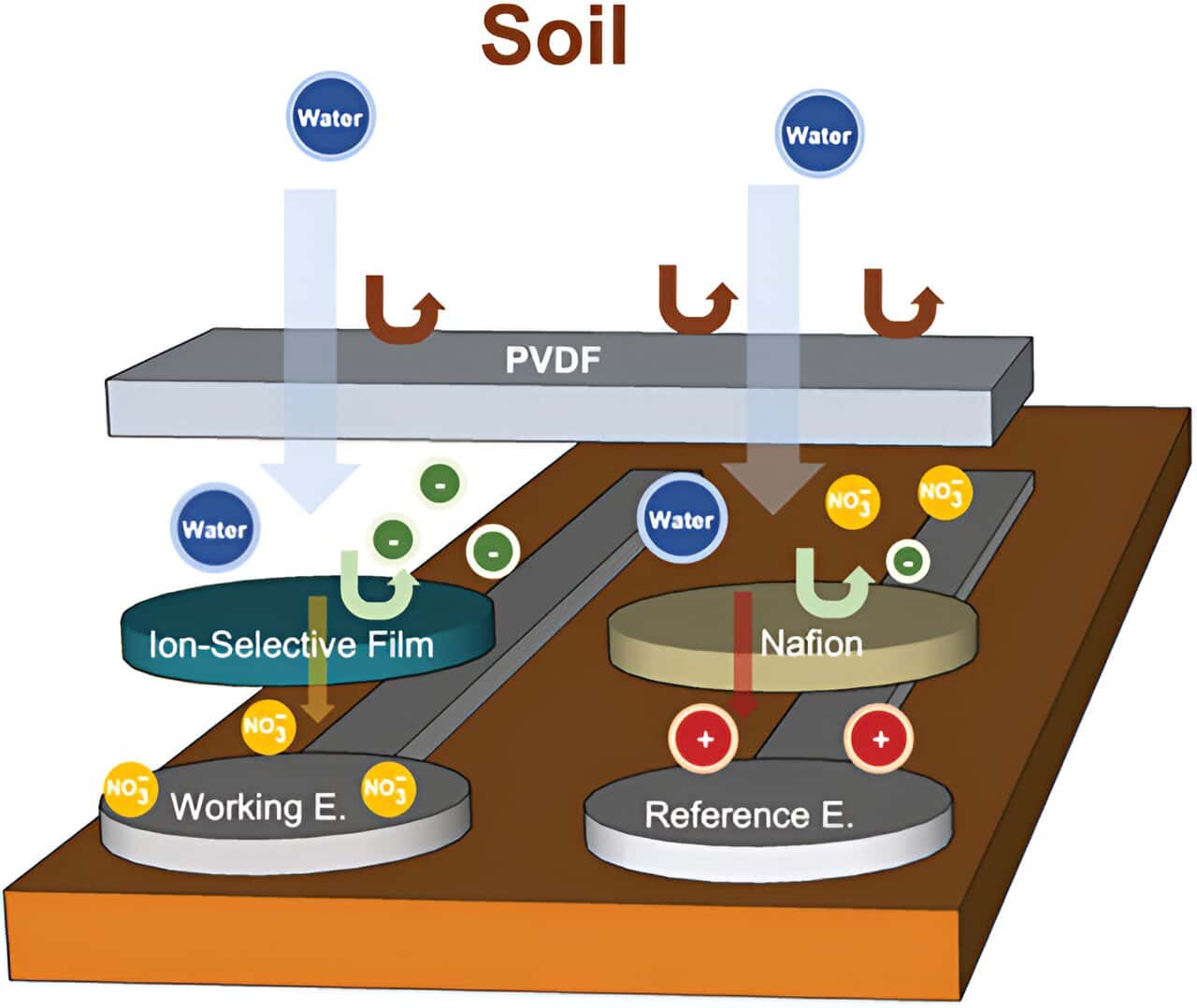UW-Madison engineers unveiled innovative nitrate monitoring soil sensors

Engineers at the University of Wisconsin-Madison have created innovative soil sensors that offer continuous, real-time monitoring of nitrate levels in soil. This development could significantly impact farming efficiency and environmental health. These printed electrochemical sensors, designed to be both affordable and effective, are poised to transform how farmers manage soil nutrients, potentially leading to substantial cost savings and better crop yields.
Joseph Andrews, an assistant professor of mechanical engineering who spearheaded the project, highlighted the sensors’ ability to provide farmers with precise data on soil nitrate levels. This information is crucial for making informed decisions about fertilizer use, which can reduce excess spending and mitigate environmental risks associated with over-fertilization. “Our sensors could give farmers a greater understanding of the nutrient profile of their soil and how much nitrate is available for the plants, helping them to make more precise decisions on how much fertilizer they really need,” Andrews explained.
Traditional methods for monitoring soil nitrate are often cumbersome, costly, and unable to deliver immediate results. In response, Andrews and his team employed an inkjet printing process to create potentiometric sensors, commonly used in liquid solutions but not typically suitable for the abrasive conditions of soil. To overcome this, the sensors were enhanced with a protective layer of polyvinylidene fluoride, which has microscopic pores that filter out soil particles while absorbing nitrate-rich moisture.

This innovative design allows the sensors to function effectively in the challenging environment of soil by capturing and analyzing nitrate-laden water. The research team’s findings, published in the journal Advanced Material Technologies in March 2024, demonstrated the sensors’ accuracy in two soil types prevalent in Wisconsin—sandy soil and silt loam.
Further enhancing the versatility of this technology, the sensors are part of a “sensing sticker” system that also measures moisture and temperature at various soil depths. These stickers are mounted on a flexible rod, allowing for comprehensive subterranean profiles that can track nitrate movement and leaching in real-time.
The research team plans to expand testing of their sensor technology in the summer of 2024 at two agricultural research stations operated by UW-Madison. This upcoming phase will involve deploying 30 sensing rods to gather more extensive data, potentially setting the stage for broader adoption of this technology in agriculture.
The study’s co-authors include Kuan-Yu Chen, Aatresha Biswas, Shuohao Cai, and Jingyi Huang, a professor of soil science. All are affiliated with UW-Madison and contributed to the development and testing of the sensors.
Source: Phys.org
Enjoyed this story?
Every Monday, our subscribers get their hands on a digest of the most trending agriculture news. You can join them too!
















Discussion0 comments